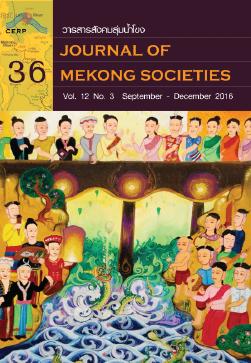Remarks on Buddha Images with the Left Hand in maravijaya in Thailand and Myanmar: Recent Interpretations
Main Article Content
Abstract
The majority of seated Buddha images created in Thailand and Myanmar have the mudra of subduing Mara, or maravijaya, (also known as the earth-touching pose, or bhumisparsa) with the right hand touching the earth and the left hand in the lap. This study originated from questions about two Buddha images with this mudra in reverse, that is, with the left hand in maravijaya. One such image is in the Hariphunchai National Museum, Lamphun, Thailand and the other is in the Sriksetra Archaeological Museum, Sriksetra, Myanmar. This article examines these images and explores possible reasons for this unusual reverse mudra, as well as historical connections between the two areas in which they were found. The methodology for the study consists of comparing artifacts at Sriksetra and Bagan in Myanmar with those at several Dvaravati sites in central Thailand. Buddhist iconography and beliefs, especially Vajrayana, are also considered. The study explores several explanations for the reverse mudra, but in the absence of further evidence, does not find any of them totally convincing. It recommends further research of the possibility that the Mon people in Lamphun and Pyu people in Sriksetra created this ‘local iconography.’ The role of the ancient Ari sect from Bagan should also be considered.


